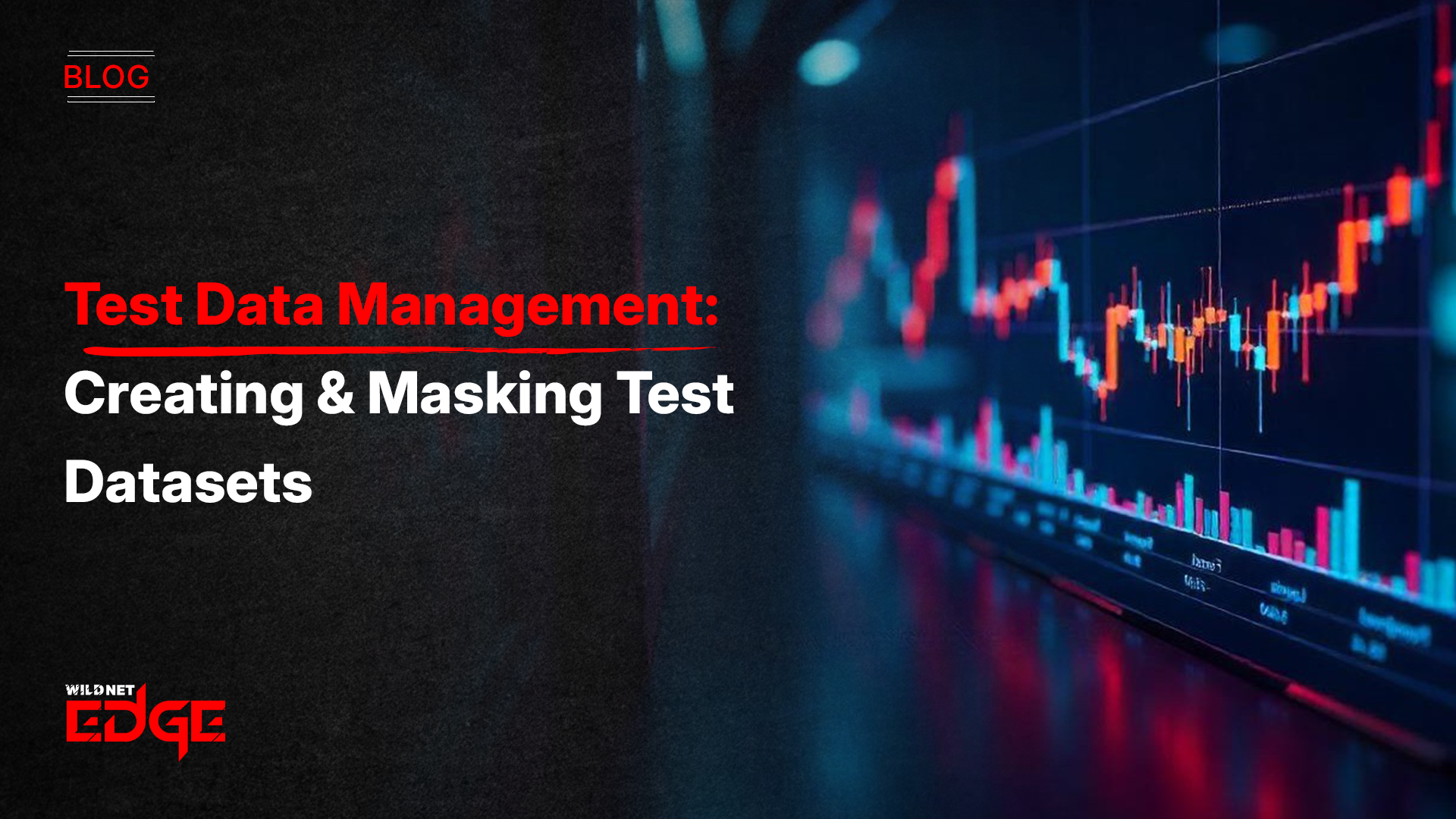Struggling with unreliable test data or worried about data breaches during testing? Managing test data isn’t just tedious — it’s critical for accurate, secure software development. If you want smooth testing cycles without risking sensitive information, you need effective Test Data Management. In this post, we’ll break down how to create, mask, and manage test datasets — ensuring your testing is both realistic and compliance-safe.
Understanding Synthetic Data in Test Data Management
Synthetic data is revolutionizing Test Data Management by offering a smart alternative to using real production data in testing environments. Simply put, synthetic data is artificially generated information that mimics the statistical patterns and behaviors of real data but does not contain any actual sensitive or personally identifiable information (PII).
Unlike traditional test data, which often involves duplicating or subsetting production data (and thus risks exposing confidential information), synthetic data generation leverages algorithms, machine learning, or simulation models to create realistic yet entirely fictitious datasets. This approach drastically reduces privacy risks and compliance burdens.
Methods to Generate Synthetic Data:
- Rule-Based Generators: Use predefined rules or templates to produce data conforming to expected formats and distributions (e.g., generating valid-looking invoices).
- Statistical Modeling: Models approximate the underlying patterns from real datasets and generate new synthetic samples reflecting those traits.
- Generative AI Models: Advanced AI frameworks like GANs (Generative Adversarial Networks) or Transformer-based models train on real data and create highly realistic synthetic examples.
Benefits Over Production Data:
- Privacy Assurance: Synthetic data contains no actual PII, so breaches during testing do not compromise real user info.
- Unlimited Scalability: Easily generate massive amounts of test data tailored to edge cases or rare scenarios.
- Testing Realism: High quality synthetic datasets maintain correlations and distributions necessary for valid functional or performance testing.
- Cost-Effective: Reduces overhead in anonymization and compliance validation required for production data reuse.
For businesses aiming to modernize their software delivery pipelines, synthetic data is a game changer — enabling robust, compliance-safe tests without the headaches of managing sensitive data directly.
Compliance-Safe Testing: Ensuring Data Security and Privacy
Meeting compliance standards is non-negotiable in today’s digital landscape. Regulations such as GDPR (General Data Protection Regulation), HIPAA (Health Insurance Portability and Accountability Act), CCPA (California Consumer Privacy Act), and others impose strict controls around collecting, storing, and using personal data — including during testing phases.
Compliance-safe testing means applying efficient Test Data Management practices to prevent unauthorized exposure of sensitive data while maintaining test effectiveness. Organizations must adopt masking, anonymization, and encryption to scrub or obfuscate PII from test datasets.
Key Compliance Considerations:
- Data Minimization: Only use the minimum amount of data necessary for the test case to limit exposure.
- Data Masking: Replace sensitive fields with realistic but fictitious values. This can be reversible (tokenization) or irreversible (anonymization).
- Anonymization Techniques: Remove or distort identifiers such that the data no longer relates back to an individual, ensuring compliance with GDPR’s strict pseudonymization rules.
- Access Controls: Limit test data access to authorized personnel with strict audit trails.
- Encryption: Use encryption protocols for data at rest and in transit within testing environments.
Masking Techniques for Compliance-Safe Testing:
- Character Substitution: Replace characters in fields (e.g., change social security numbers or credit card digits while maintaining format).
- Tokenization: Swap sensitive values with tokens that maintain referential integrity but have no exploitable value.
- Format-Preserving Masking: Modify data while retaining its format and length, so tests dependent on structure can proceed.
- Data Shuffling: Randomize data within columns to preserve statistical distributions but dissociate data points from original records.
By designing test datasets with these rigorous compliance-safe measures, organizations not only protect themselves from costly fines and brand damage but also foster trust during audits and stakeholder reviews.
Techniques for Creating and Masking Test Datasets
Effective Test Data Management hinges on selecting the right combination of creation and masking techniques aligned to business needs, regulatory demands, and test scenarios. Here are some core strategies to build secure and usable test datasets:
Data Subsetting
Copying an entire production database for testing is impractical and risky. Subsetting extracts only relevant slices of data that cover the specific test cases or business areas involved.
- Reduces storage and management overhead.
- Limits exposure of unnecessary sensitive data.
- Enables targeted testing of specific features or modules.
Data Generation
Synthetic data generation tools let you craft datasets from scratch or augment existing test sets to cover edge cases or performance tests.
- Helps simulate rare scenarios that real data might not represent.
- Ensures the quantity and quality of data match testing needs.
- Enables continuous testing cycles without production data dependency.
Masking and Anonymization
Masking sensitive fields or anonymizing entire records ensure data privacy compliance while retaining test validity.
- Maintain data referential integrity across related tables.
- Use reversible masking where required for debugging and auditing.
- Employ irreversible anonymization for high-risk environments.
Encryption
Test data encryption adds a critical layer of security, especially when datasets move across environments or cloud platforms.
- Use strong encryption algorithms (e.g., AES-256).
- Manage encryption keys securely with limited access.
- Combine encryption with masking for dual protection.
Tools and Best Practices
Modern Test Data Management platforms integrate creation and masking capabilities, offering automation, policy enforcement, and traceability. Some best practices include:
- Automate test data provisioning and masking tasks.
- Validate masked data for usability before tests run.
- Schedule regular audits and compliance reports.
- Maintain audit trails for masking processes and access.
Leading tools in 2025 incorporate AI to accelerate synthetic data creation and automated masking workflows, reducing manual labor and errors while improving test data quality.
Advanced Trends in Test Data Management
The world of Test Data Management continues evolving rapidly in 2025, fueled by AI, automation, and increasingly stringent data protection laws. Staying ahead of these trends ensures your test data strategy remains efficient, cost-effective, and compliant.
AI-Powered Synthetic Data Generation
Artificial intelligence models are now capable of producing complex synthetic datasets with minimal human input, accurately reflecting real-world data nuances.
- Machine learning algorithms learn context and relationships for highly realistic data.
- Dynamic synthetic data adapts in real-time to test requirements.
- Reduces time from test planning to dataset availability dramatically.
Continuous Test Data Provisioning
Instead of static snapshots, continuous provisioning delivers fresh test datasets on demand, integrated seamlessly with CI/CD pipelines.
- Enables frequent automated testing cycles.
- Supports DevOps agility by synchronizing test data with code changes.
- Eliminates data staleness impacting test accuracy.
Automated Masking Solutions
Automation in masking enhances compliance and security while reducing manual errors.
- Policy-driven masking frameworks enable consistency.
- Integration with version control and testing tools streamlines operations.
- Real-time masking at data ingestion points accelerates secure data access.
Cloud-Enabled Test Data Management
Cloud adoption expands flexibility in managing and scaling test data, providing access to synthetic data and masking services via SaaS platforms.
- Cost-efficient scaling with pay-as-you-go models.
- Enhanced collaboration across distributed teams.
- Advanced security controls with cloud-native encryption and access policies.
By adopting these innovations, enterprises reduce testing cycle times, lower risk of compliance lapses, and improve overall software quality at reduced costs.
Conclusion
Effective Test Data Management is no longer optional — it’s a necessity for fast, secure, and compliant software testing. Leveraging synthetic data and compliance-safe masking techniques ensures both accuracy and privacy. WildnetEdge stands as a trusted leader in delivering innovative test data solutions tailored to your enterprise needs. Ready to transform your test data strategy? Let WildnetEdge guide you to seamless, secure testing that meets today’s demanding compliance standards and accelerates your development lifecycle.
FAQs
Q1: What is synthetic data in Test Data Management?
Synthetic data is artificially generated information that mimics real data patterns without exposing sensitive details, enabling safer and more flexible testing.
Q2: How does compliance-safe testing protect sensitive information?
It uses data masking, anonymization, and encryption techniques to ensure test datasets comply with regulations like GDPR while maintaining usability.
Q3: What are common methods to mask test datasets effectively?
Techniques include data anonymization, tokenization, character substitution, and format-preserving masking, each balancing data privacy with realism.
Q4: Why is Test Data Management important for software quality assurance?
Proper management ensures test data is accurate, accessible, and secure, enabling thorough testing and reducing risks related to data breaches or compliance violations.
Q5: How can WildnetEdge help improve my Test Data Management process?
WildnetEdge offers advanced synthetic data generation and masking tools that simplify secure test dataset creation while ensuring regulatory compliance.

Nitin Agarwal is a veteran in custom software development. He is fascinated by how software can turn ideas into real-world solutions. With extensive experience designing scalable and efficient systems, he focuses on creating software that delivers tangible results. Nitin enjoys exploring emerging technologies, taking on challenging projects, and mentoring teams to bring ideas to life. He believes that good software is not just about code; it’s about understanding problems and creating value for users. For him, great software combines thoughtful design, clever engineering, and a clear understanding of the problems it’s meant to solve.
 sales@wildnetedge.com
sales@wildnetedge.com +1 (212) 901 8616
+1 (212) 901 8616 +1 (437) 225-7733
+1 (437) 225-7733































